Get the weekly SPARTANAT newsletter.
Your bonus: the free E-Book from SPARTANAT.

How far is something away? This question is very crucial for ballistics, or more accurately for hitting the target. Fortunately, distances can be calculated by "having fun with angles" if the size or width of the target is known. Our German friends know this as the "MKS Formula," while we here in Austria know it as the BÜSTE Formula. BÜSTE stands for Breite Über Strich ergibt Entfernung in Kilometer, which translates to width over line equals distance in kilometers. So, quite a bit of mental math. This is where Wndsn's Mil/Moa Range Calculator (MMC) comes in: it is a rangefinder. We will explain how it works.
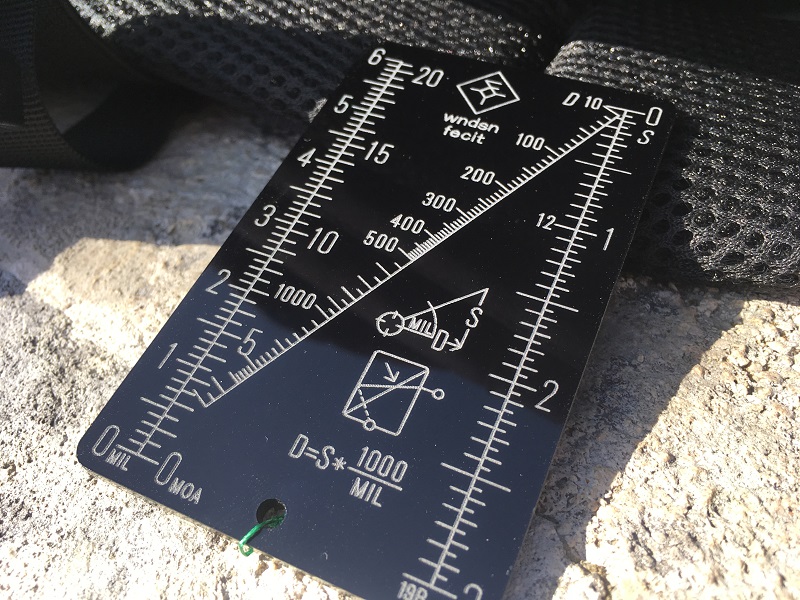 This is what the device looks like. It's the size of a credit card made of 3mm thick acrylic, with finely lasered scales. The left side offers a scale for MOA and MIL, also known as "line." On the far right is a scale for the size of the target (0-3), which is unitless. The inner side of the scale is meant for our American friends and represents a division in inches. Twelve inches make up a foot. Additionally, you will find the formula for distance calculation and a pictogram for the application on the card.
This is what the device looks like. It's the size of a credit card made of 3mm thick acrylic, with finely lasered scales. The left side offers a scale for MOA and MIL, also known as "line." On the far right is a scale for the size of the target (0-3), which is unitless. The inner side of the scale is meant for our American friends and represents a division in inches. Twelve inches make up a foot. Additionally, you will find the formula for distance calculation and a pictogram for the application on the card.
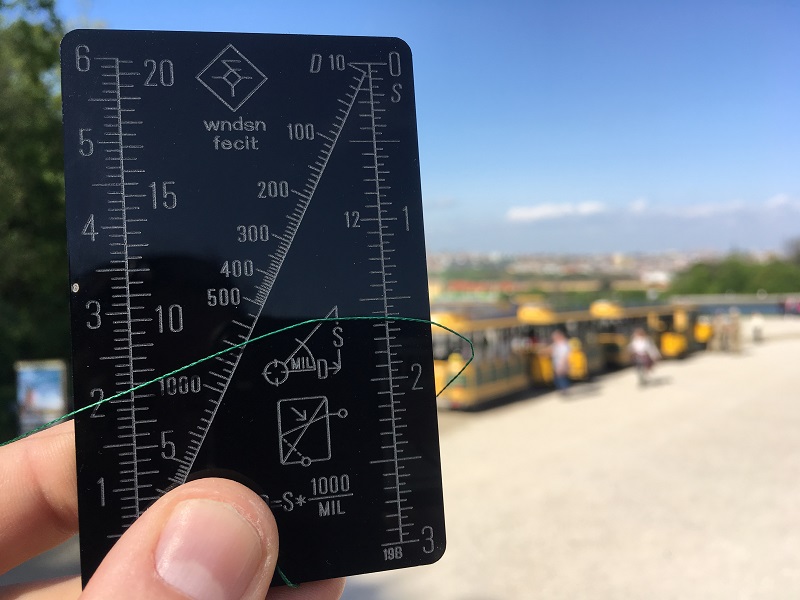 The slanted scale in the middle shows you the distance, also unitless. If you move into the size scale with meters, the distance scale will also display meters. This is a clever and intuitive design. The most important part for calculation is the thin thread. Now, let us show you how this works in practice:
The slanted scale in the middle shows you the distance, also unitless. If you move into the size scale with meters, the distance scale will also display meters. This is a clever and intuitive design. The most important part for calculation is the thin thread. Now, let us show you how this works in practice:
 First, you need a size in line/MIL of your target. A rifle scope or a spotting scope is suitable for this. We used the Recce Pro HD by Vortex Optics. The upper window of Schönbrunn Palace in Vienna is approximately 6 lines big.
First, you need a size in line/MIL of your target. A rifle scope or a spotting scope is suitable for this. We used the Recce Pro HD by Vortex Optics. The upper window of Schönbrunn Palace in Vienna is approximately 6 lines big.
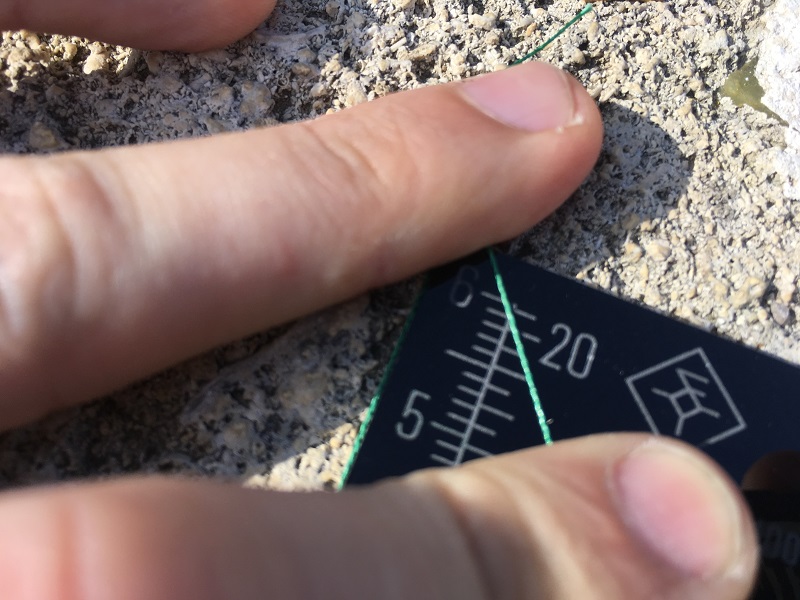 So, we place the thread at the 6 on the MIL scale. Next, we need to know how big the window is. We estimated it to be 5m in height.
So, we place the thread at the 6 on the MIL scale. Next, we need to know how big the window is. We estimated it to be 5m in height.
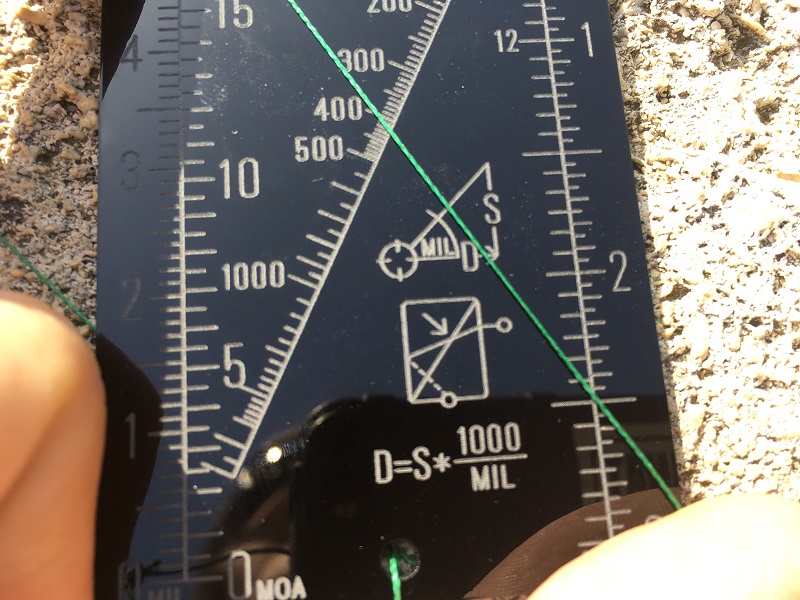 However, there is no 5 on the size scale, the highest number is 3. No problem. The input units can be multiplied by factors which will then convert the result. We divide 5m by 2 and place the string at 2.5.
However, there is no 5 on the size scale, the highest number is 3. No problem. The input units can be multiplied by factors which will then convert the result. We divide 5m by 2 and place the string at 2.5.
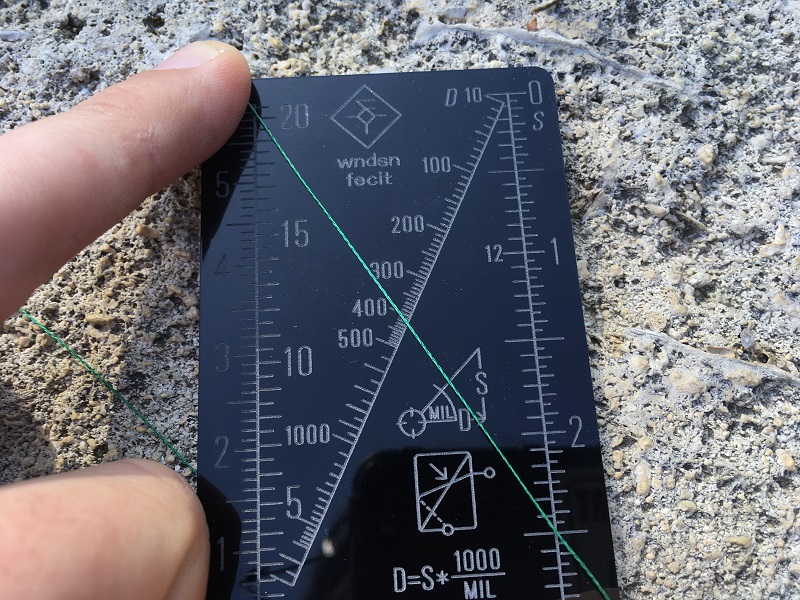 The thread must be taut. The more accurately you hold it, the more accurate the result will be. Now, we read approximately 420 on the middle scale. These are meters, as we chose meters as the input unit. However, we still need to multiply the result by the reciprocal of our factor, since we changed the input size. The reciprocal of 1/2 is 2, so we simply double the result and get 840m. The BÜSTE Formula gives us 5m/6 lines=0.833 km=833m, not bad at all.
The thread must be taut. The more accurately you hold it, the more accurate the result will be. Now, we read approximately 420 on the middle scale. These are meters, as we chose meters as the input unit. However, we still need to multiply the result by the reciprocal of our factor, since we changed the input size. The reciprocal of 1/2 is 2, so we simply double the result and get 840m. The BÜSTE Formula gives us 5m/6 lines=0.833 km=833m, not bad at all.
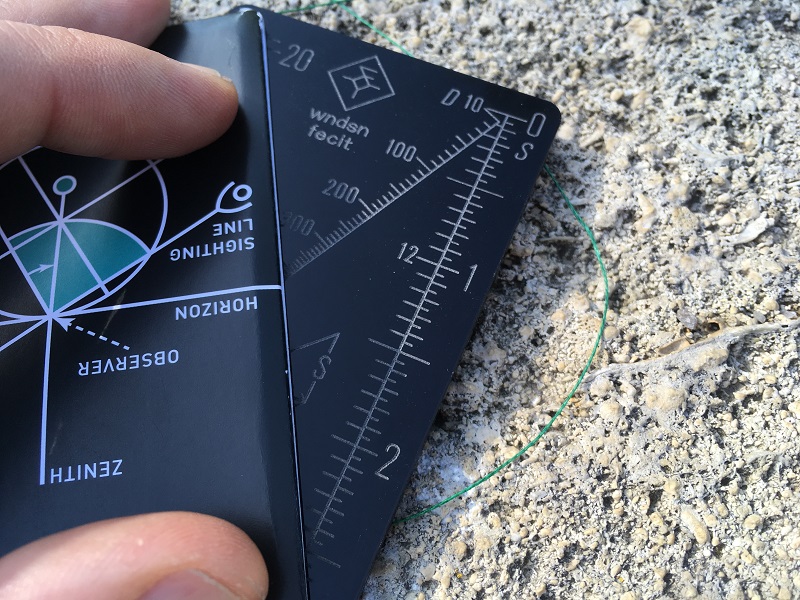 If you lose the thread, you can also use a ruler. Adjusting the input values - the scale jumping, as Wndsn calls it - may be confusing at first, but it's simple. The factor you add to the MIL scale must be applied in the same way to the result. So, if you halve the MIL value, you must also halve the result. For the size scale, as demonstrated, you need to apply the reciprocal in order to arrive at the correct distance.
If you lose the thread, you can also use a ruler. Adjusting the input values - the scale jumping, as Wndsn calls it - may be confusing at first, but it's simple. The factor you add to the MIL scale must be applied in the same way to the result. So, if you halve the MIL value, you must also halve the result. For the size scale, as demonstrated, you need to apply the reciprocal in order to arrive at the correct distance.
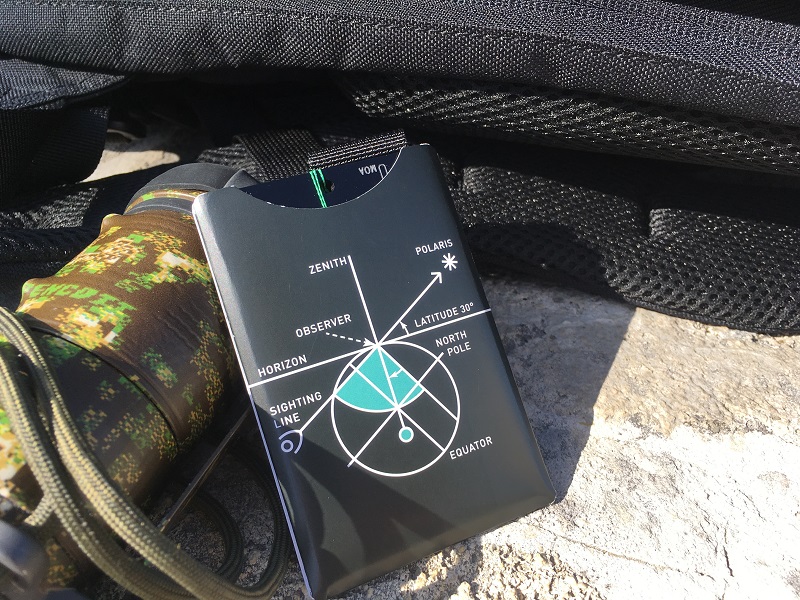 CONCLUSION: A very practical tool that takes the mental math away in stressful situations or when tired. With some practice, the Wndsn Mil/MOA Range Calculator is quickly and securely usable. Due to its compact size and almost no weight, it will always be with you. Because, let's admit it, mental math has never been our strong suit.
CONCLUSION: A very practical tool that takes the mental math away in stressful situations or when tired. With some practice, the Wndsn Mil/MOA Range Calculator is quickly and securely usable. Due to its compact size and almost no weight, it will always be with you. Because, let's admit it, mental math has never been our strong suit.
Available directly from Wndsn for €20.00 excluding shipping. An instruction manual in German and English is included. A patch can be purchased for an additional €5.
Wndsn on the web: wndsn.com
Link to the review video on YOUTUBE
SPARTANAT is the online magazine for Military News, Tactical Life, Gear & Reviews.
Send us your news: [email protected]
Ad
similar
Get the weekly SPARTANAT newsletter.
Your bonus: the free E-Book from SPARTANAT.


